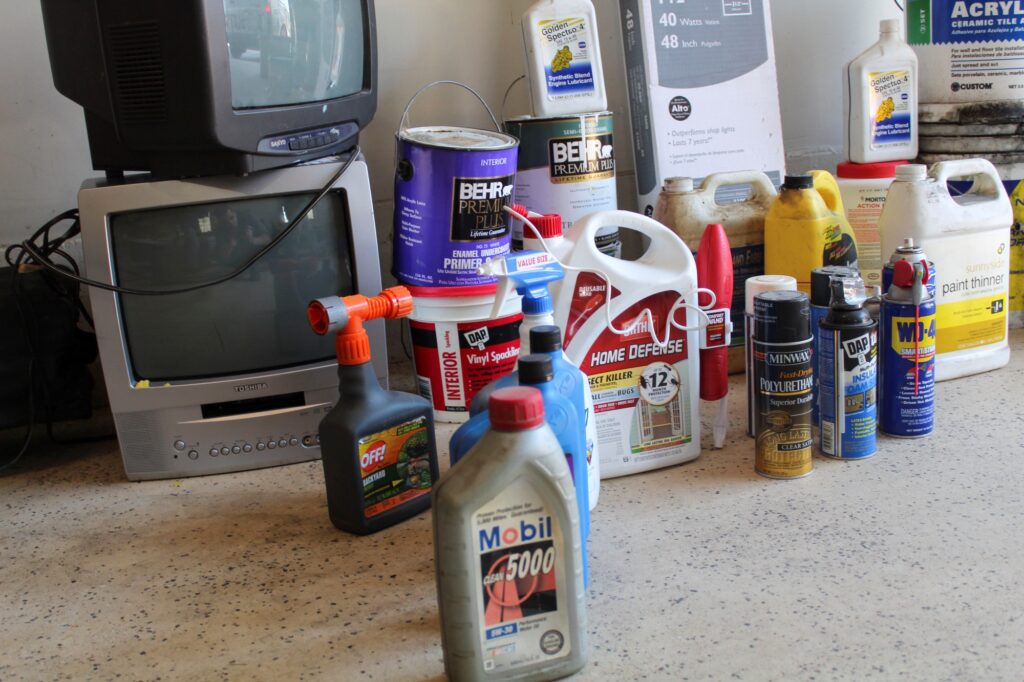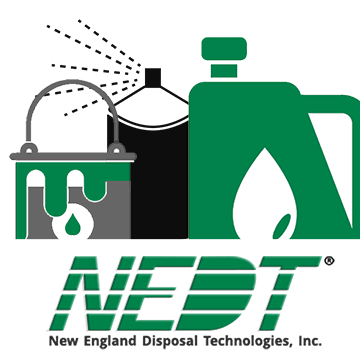Whether you’re reading this on the first day of fall or right before the first nor’easter, it’s never too late to get household hazardous waste out of your home. Today, we’re going to focus on two common types of household items that should be part of your house cleanout before winter: bulky products and hazardous chemicals. Learn how to identify them, the risks they pose, and what you can do to dispose of them.
Dealing with Bulky Household Products
Now, if you’re looking to carve out space for your winter hibernation, let’s start with the bulky household products. Some, such as old pillows or boxes of knick-knacks, are easier to dispose of than the following:
- Tube TVs: The iconic space-waster is an unused CRT (Cathode Ray Tube) or “Tube” TV. These bulky products require careful handling, especially if they have been recently plugged in.
- Electronics: Other electronics, from entertainment systems to old computers, can also be found gathering dust in storage. The heavy metals in these electronics require specialized recycling facilities.
- Paint Cans: Old paint, whether latex or oil-based, can really pile up, especially if you’ve got generations of paint from previous house paintings or projects. This much paint, even if it’s latex, is impossible to dispose of at home.
There are other products not on this list, such as old appliances with CFCs and other “white goods” that fall outside of our services.
Removing Hazardous Chemicals from Home
There are many types of household hazardous chemicals that can occupy space in a house. Most of these pose some sort of risk, so unless they are needed, it’s better to dispose of them. These fit into three major subcategories:
- Health Hazards: These chemicals, especially when not properly stored, can impact the health of those around them. The most common of these is the release of VOC (Volatile Organic Compounds) from products such as gasoline or solvents.
- Safety Hazards: These are products that pose risks to the safety of people around them. This includes products that are brightly colored, smell, or taste attractive to pets and children. An example would be the sweetness of glycol-based antifreeze.
- Fire Hazards: Lastly, there are products that pose a risk of fire or similar damage to a home. This can be an issue with VOCs, as well as many petroleum-based products, certain combinations of cleaning chemicals, and batteries such as lithium-ion.
Your Disposal Options for a House Cleanout
Junk haulers, dumpsters, and other bulk (and bulky) item solutions do have certain restrictions on what they take, and household hazardous waste is almost always included in these restrictions. You may have additional disposal options in your area, such as local facilities or disposal events, but these are not typically offered in the fall or winter. One option is to work with a commercial hazardous waste disposal company, such as NEDT.
At NEDT, our Collection Centers offer quick and easy disposal options, and we also provide home pick-up for those who can’t make it in, with vehicles large enough for a full house cleanout or even downsizing. If you’re not looking forward to a winter bundled up with these types of products and you’re ready to dispose of all the waste that’s been piling up, we can help. Contact us today or pick a location, and we’ll see you soon.




Leave a Reply